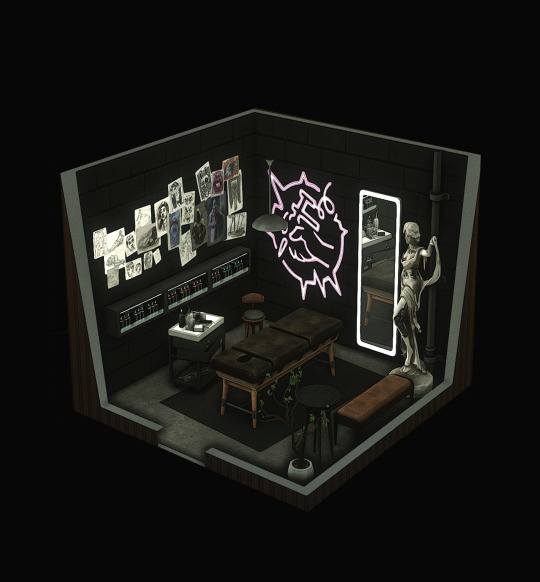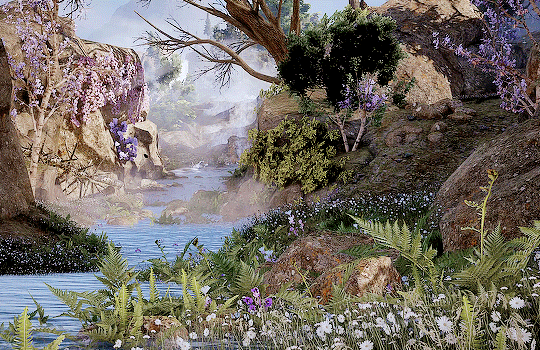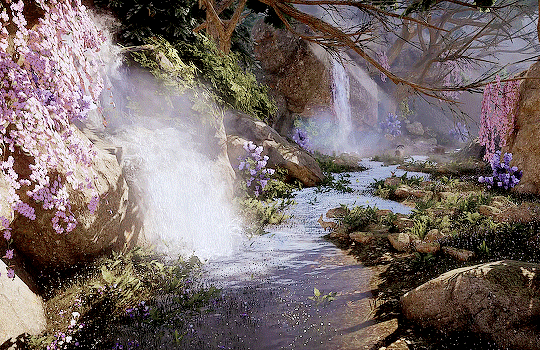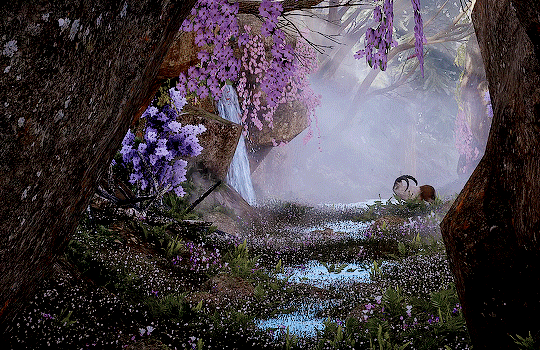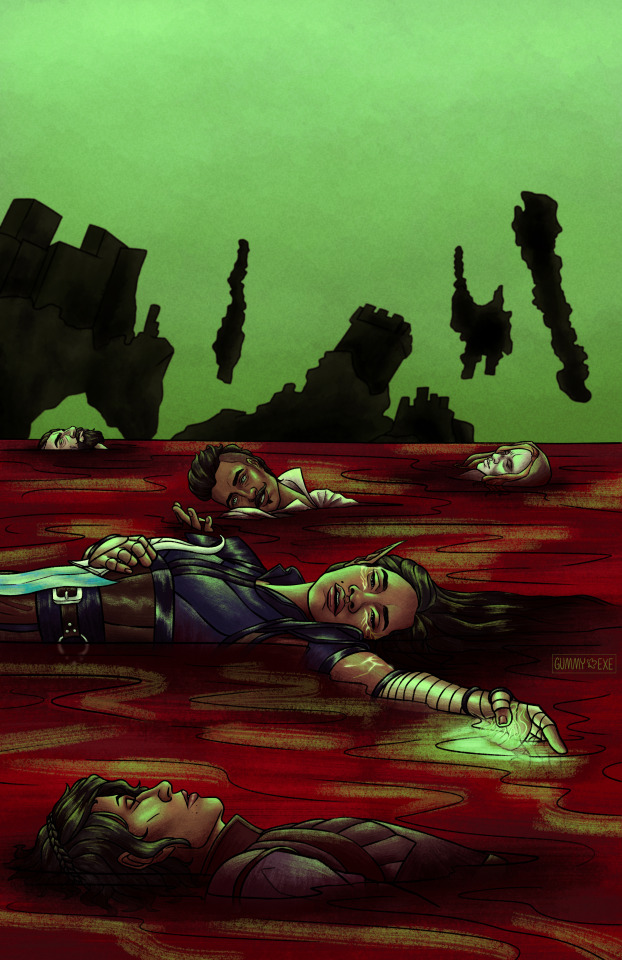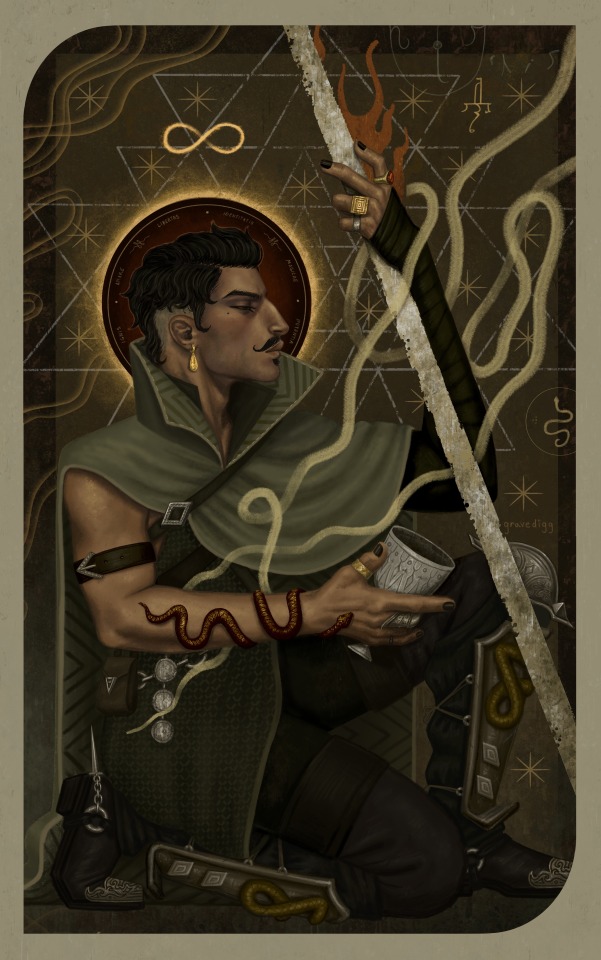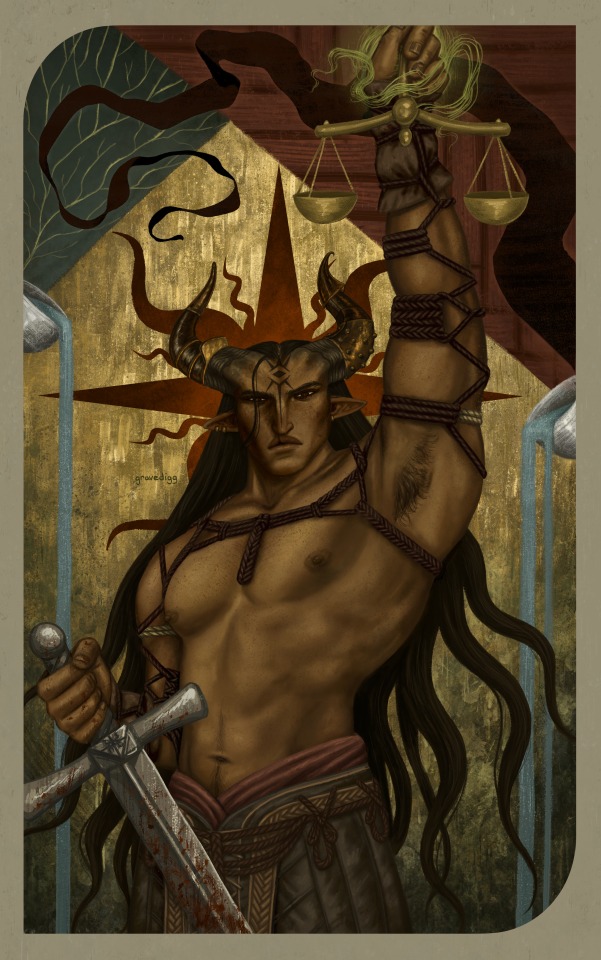Don't wanna be here? Send us removal request.
Text






surprisingly, for the first time in years I actually enjoy the gameplay
226 notes
·
View notes
Text



Fika & Flour
Small Business lot No CC Play tested Free on Patreon Gallery ID: Okiukiyo
@sssvitlanz @maxismatchccworld @s4realtor
1K notes
·
View notes
Text





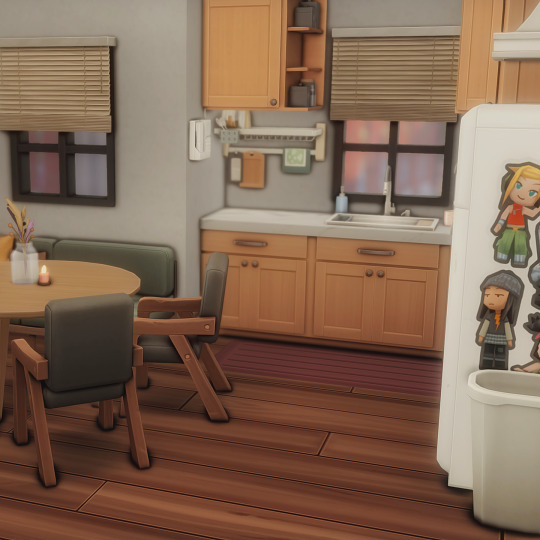

Nordhaven Art Nook
20x15 No CC Play Tested Free on Patreon Gallery ID: Okiukiyo
@sssvitlanz @s4-builds @s4realtor
997 notes
·
View notes
Text
eternally thinking about "Celene - sixteen, hollow-eyed, with both her parents dead" playing the perfect porcelain doll for Lady Mantillon

183 notes
·
View notes
Text

A reeeeeally old Solavellan sketch. Need to do an updated version 🤔 I fear I shall never recover from this pairing
728 notes
·
View notes
Text
Why I Love the Hinterlands
The Hinterlands in Dragon Age: Inquisition get kind of a bad rap, and for kind of understandable reasons. For anybody who doesn't know the story, some context. The Hinterlands are the first open world area that unlocks for the player, a vast and highly explorable map full of quests, worldbuilding, and NPCs. So what was the problem? The problem was that the Dragon Age series had set two games' worth of precedent that the player could get locked out of an area and lose access to sidequests and other content—and the devs seemed not to fully realize they were fighting this precedent, or how strong it was, until the game came out and completionist players were getting exhausted and annoyed running around this huge map trying frantically to knock out all the side content before moving on. We still make jokes about devs on twitter trying to tell players that they could leave the Hinterlands. Lines were later patched in for the starting companions urging the player to go to Val Royeaux and advance the plot; you'll hear those lines if you play the game today, but they weren't there in the beginning.
The game's executive producer Mark Darrah has even spoken about this problem in his Dragon Age: Inquisition Memories and Lessons video on YouTube. From a game design perspective I do not dispute this issue. It definitely represents an oversight in the way the area is presented to players and the context they are given for what they should do next.
All that said… I love the Hinterlands, and with every replay (I have beaten the game four times at this point) my appreciation for this area and what it brings to the story has deepened. And as recent polls have raised discussion about the merits of various maps, I've felt moved to rise to their defense, so... here's why I think the Hinterlands are Good Actually.
Every map in Inquisition has its own overarching story, introduced by Scout Harding when the map unlocks and revealing itself through exploration and completing the quests within. Crestwood has the story of the flood during the Blight. The Exalted Plains have the story of the Orlesian Civil War. The Hissing Wastes have the story of Fairel and the surface thaig. And so forth. For this reason, I've come to feel that once you've progressed far enough in the main quest to have collected most or all of your companions, the most rewarding way to experience each area is at one go, as much as possible. Popping in and out of maps to complete one quest at time is, in my opinion, really detrimental to exploration and makes it harder to see the big picture. This is also one place where I really appreciate the invisible approval meter, because it discourages me from always stacking my party to game approval, the way I pretty much always play DA2.
At first glance, the story of the Hinterlands is the story of the ongoing war between the rebel mages and the renegade templars. This is one reason the Inquisitor may go there: to make contact with the rebel mages. They have been offered refuge in Redcliffe and are presently entrenched in the castle and adjoining village; the templars continue to attack the mages' position, and thus there is concentrated fighting in this region. Splinter factions of both mages and templars are also entrenched elsewhere in the area.
But this is just the setup. What the Hinterlands is about, its real story, is the common people.
The Inquisitor is first sent to the Hinterlands to make contact with Mother Giselle, in hopes of gaining some Chantry support. Seeking her out requires the Inquisitor to fight their way through the conflict to reach the Crossroads, where many refugees have gathered.
In these big, sweeping stories about heroes and villains, I think it's easy for the perspectives of common people to get kind of lost. One thing I do appreciate about the Dragon Age series is that every game does make a real effort to give voice to the commoner perspective. Origins has its city elf and casteless dwarf origin stories, and the player encounters many commoners throughout the game and gets to hear a bit of their perspective. Dragon Age 2 wouldn't be Dragon Age 2 without Darktown and Lowtown and the elven alienage and our interactions with the people who inhabit those parts of the city. Oddly enough, though, every human character we've ever had the chance to play in Dragon Age has come from a noble family; sure, Hawke starts out living as a commoner, but doesn't stay that way for long.
In Inquisition especially, we don't have the option of a commoner prologue to really drive home that perspective and carry it through the story. And while a Dalish elf, a Carta dwarf, a qunari mercenary, and a Circle mage certainly live very different lives than a human noble, they also live very different lives than Giles the farmer—not necessarily more privileged, but still different, with differing priorities and different stakes in this conflict. Bron the farmhand has no reason to be at the Conclave; he's here mucking out stalls, knowing the horses still need to be fed even if there is a rift spewing demons over there in the middle of the neighbor's pasture. Elaina the farmer is putting away cabbages for winter and hoping the barn doesn't get burned down by a stray fireball. And Elaina is one of the fortunate ones: her family's home and livelihood are still intact, for now. The Crossroads now hold many ordinary people who through no fault of their own have lost their homes, their crops, even family members.
Theirs is the perspective we get in the Hinterlands.
You don't have to stick around for all that. You can take Mother Giselle’s advice immediately, go to Val Royeaux, go deal with bigger and more important things and people. You will need 4 Power to go to Val Royeaux, but Power is easy to come by. Close a few rifts, and you’re good to go. You don’t have to care about these refugees and their problems.
But you know, something I notice is that the founders of the Inquisition spend a whole lot of breath talking about "the people." How they have to restore order for the people. How the people are looking to us—to you, Your Worship. The people need you. The people need to believe in you. That’s why we’re raising an army and building a cult around you! For the people.
Well, here are the people.
And if you talk to the people at the Crossroads, it turns out that what they actually need is less faith in Andraste’s chosen, and more blankets for the cold nights, medicine for the sick and injured, and food so they don’t starve. They need the war ended and the Breach closed so that they can return to what’s left of their homes and salvage what crops and livestock they can.
It is easy to feel a bit smothered by the Inquisition’s overwhelming Andrastian-ness, especially when playing a character who has their own religious beliefs, or none at all. We have a lot of characters trying to tell us about the importance of faith—their faith, specifically. We’re told that the people need to believe, and that’s why we have to play the role of this figurehead. And you can run with that idea and play it straight, if you want to. But there is, in fact, a different story to be found here, if you want to look for it—a story told in the world itself and the people who who inhabit it: people cannot eat faith.
And Mother Giselle, the person we are sent to the Hinterlands to find, knows this. She is certainly a devout Andrastian and deeply influenced by a life in the Chantry—but she also chooses to be on the ground helping people in need rather than arguing with her fellow clerics in Val Royeaux. After the attack on Haven, Mother Giselle and the Inquisitor have a conversation about faith, in which the Inquisitor points out, in one way or another, that faith may not be enough. Giselle may seem to disagree. Yet it is she who then leads the survivors in a song that does not mention the Maker or Andraste even once. The much-maligned “The Dawn Will Come” is so frequently assumed to be a Chantry hymn because it is Mother Giselle who starts it; even the fan wiki lists it as such. But I hear something much more akin to a folk song, a marching tune—not a high holy chorus for a cathedral choir, but a song with a simple tune and repetitive lyrics, about hope in dark times.
Perhaps she was rather more persuaded than she appeared.
When you ask your ambassador Josephine, “What do the people make of us?” she tells you how many noble allies you’ve gathered. And that’s not unimportant; this boots on the ground shit costs money, and most of that is coming out of noble coffers. But when you ask Mother Giselle, “How are the people?” she speaks of the terror and suffering of the people in the Hinterlands, and warns of mass starvation if the farmers cannot return to their fields.
This is the story of the Hinterlands.
And the density of side quests on this map reflects that. In addition to aiding the refugees with food, blankets, and medicine, there are so many more opportunities to help people in small but meaningful ways. An elven widower who cannot reach his wife’s grave through the fighting asks the Inquisitor to bring flowers there as is his custom. A grieving widow asks for the retrieval of her husband’s wedding ring from the templars who murdered him. A beloved ram has gone missing. A mage mourns her templar lover and the war that has come between them. A note speaks of two brothers, templar and apostate, torn apart by the war. A son has gone off to join the cult in the hills (no, not our cult in the hills, another one), and his mother needs the special remedy for her breathing problems that only he knows how to make. And so many more. Even the Winterwatch cult itself asks us to consider what it is the people truly need: the Inquisitor can enlist them as Inquisition agents, or ask them to aid the refugees.
Are all these sidequests vital to the plot? No. You can skip them if you want to. Are they relevant to the plot? Absolutely. Are they meaningful? To me, yes. Maybe they didn't change the whole world, but they changed something for these people.
It is so important to me that we get to actually meet the common people whose lives are depending on us. Whatever you think of the Inquisition itself, people actually are dying because of both the rifts and the war, and many more will die if these problems aren’t resolved. Meeting them, giving them names and faces and side quests dealing with their more mundane needs is so much more meaningful to me than standing around back at base being told “People are starving in the Hinterlands.”
It's understandable that the Hinterlands had to fight the precedent set by Lothering getting locked off, because in many ways the Hinterlands serves the same narrative purpose as Lothering: showing the effects of the present crisis on the common people and what's at stake for them.
I should note that the Hinterlands are not the only part of the game that addresses the impact on common people—far from it, in fact. The Exalted Plains give us a taste of how many have died for the Gaspard's attempted coup; Emprise du Lion shows us commoners kidnapped and tortured by Red Templars; the Winter Palace puts the bloody reality of the "Grand Game" in stark contrast to its gilded veneer with the indiscriminate murder of servants for expediency.
But it’s important that we are introduced to the suffering of the common people early in the game, when the Herald—not yet the Inquisitor—may still feel pretty shaky on their motivations for even sticking around.
While I've mostly been talking about non-mage commoners here, I do want to say a few words about the rebel mages as well, since they too are a part of the story of the Hinterlands. I hope that no one reading thinks I am blaming the rebel mages as a whole for what's happening in the Hinterlands, for what the common people here have suffered. The templars, notably, are not entrenched in the Hinterlands. Their present stronghold is Therinfal Redoubt, an old Seeker fortress, which is a significant distance from Redcliffe. The fact that the bulk of the fighting is taking place near Redcliffe, while we've no evidence of a mage offensive against Therinfal, makes it pretty clear that it is the templars who are pursuing the mages at this point, not the other way around. Certainly some in the region may not bother to make that distinction while their crops are on fire, but let's be clear about the story the map is telling us: it is the mages who are under attack here, not the templars. It is sometimes said that Inquisition deliberately draws a false equivalence between the mages and templars in this war. I would like to point to this piece of environmental storytelling as evidence that that is not entirely true.
Sometimes, it seems like pointing out that collateral damage happens is read as condemning an oppressed people for defending themselves. I want to make it clear that this is not what I am saying. I simply feel that those characters who have lost homes and livelihoods in this conflict are also worth seeing, and talking about. But I also don’t think it’s an accident that this is the map whose story is all about the suffering of ordinary people, and it is also the rebel mages who have their base on this map; the templars do not.
So, that’s why I think the Hinterlands are Good Actually! They contain an absolute wealth of worldbuilding, and their story frames the game’s central conflicts around the people suffering for them, early in the game when that perspective is most needed.
648 notes
·
View notes
Text

I've made a tier list of our Dragon Age companions (excluding The Veilguard, which I haven't played) :-)
I've rated them based on their writing (like their depth, significance to the story and their character development). Some of the characters I've rated lower than I would if I were just doing it based on how much I personally like them (and vice versa!).
S-tier:
Solas
Morrigan
Anders
I didn't even think about the fact that all three of these are mages who betray you :'-) I love a good villain arc. Solas is the most interesting character in the series to me, but Morrigan is a very close second! All three of these characters are of great importance to the main stories across all three games, and they have very distinct personalities, background stories, and motivations that are discovered and developed throughout.
A-tier:
Leliana
Alistair
Varric
The same could be said of these three characters. I've only rated them lower because the other three are in a league of their own. Leliana and Alistair's stories and character development are just amazing. Varric is mostly just an incredibly well-written character and, as the unofficial narrator of the series, can't be discounted :-)
B-tier:
Loghain
Cassandra
Cullen
Dorian
Loghain is another well-written villain. His story is very interesting to me, especially if you choose to continue it into Dragon Age: Inquisition and allow his character to develop as an atoning Grey Warden. Cassandra is a character that I initially didn't care about, but discovered had a lot of depth. She also plays a significant role in Dragon Age: Inquisition.
I don't think Cullen's character is very interesting in Dragon Age: Inquisition. Taking all three games into account, however, he does add a lot of depth to the conflict between the Templars and the mages, especially as his own views on it are challenged (if not as much as I would've preferred).
I'm not sure Dorian actually belongs in this category. He matters to the main story of Dragon Age: Inquisition (and I'm sure The Veilguard, as well!), but mostly to add depth and give us some insight into Tevinter. I also don't think his character develops much throughout the story. It's like all his development is finished by the time we meet him. Like, he doesn't struggle much with having abandoned his homeland and is, instead, very sure of his decision. Despite all of that, he's just a really well-written character with a lot of personality! His personal quest is also very sad.
C-tier:
Blackwall
The Iron Bull
Cole
Isabela
Bethany
Carver
Blackwall, The Iron Bull, and Cole are very interesting characters to me, and I really enjoy their personal quests and their character development. They are rated lower due to the fact that they don't matter that much to the main story, although they do add some depth to two main quests (Here Lies the Abyss, Trespasser, and Champions of the Just, respectively). Isabela is kind of in the same category. She's a very fun character and adds conflict and depth to a main quest in Dragon Age II. Bethany and Carver are also important characters in Dragon Age II with interesting and branching story arcs that affect the main game.
D-tier:
Merrill
Fenris
Vivienne
Zevran
Josephine
Now we're getting into characters that I just don't think are important to the story and/or lack depth and development.
Merrill and Fenris are the highest on this list, as I do really like their characters and stories. Both have clear motivations and backstories, but they don't develop much throughout Dragon Age II and don't actually really matter to the main story.
Vivienne is another character that I personally really like, and I wish her character was more fleshed out! However, as it stands, we get very little content with her and barely get to scratch the surface of her hard exterior, even if we can try to do so during her personal quest. Her beliefs and world-view aren't challenged (although the Inquisitor can at least try to do so). She does get the opportunity to become Divine Victoria, which lets her play a more important role in the main story than she otherwise gets to.
I'm very charmed by Zevran, but he isn't a character that sticks or adds much to the main story. Shale does, a little! She's also pretty funny. Just not that important (not even important enough to be included in the main game).
Josephine is a sweet character, but one that lacks depth and development. Her personal quest didn't change anything or tell us anything new about her. She also barely matters to the main story.
F-tier:
Stenn
Aveline
Wynne
Sebastian
Sera
Oghren
Stenn, Aveline, Wynne, and Sebastian are sort of the same kind of stoic character. They're just boring.
I think Sera is a terribly written character. It might be easier to like her if the dialogue options when talking to her were better. Your options are usually either to say she sounds dumb or that you don't understand what she's saying, when her viewpoints are actually very straight-forward. This means it's pretty impossible to have an interesting conversation with her, whether by agreeing with or challenging her, because you're not allowed the opportunity to take her seriously. Her character also doesn't develop at all throughout the story.
Nothing about Oghren is interesting, and he has no redeeming qualities.
2 notes
·
View notes
Text
This is beautiful! I'm playing through The Descent right now and loving it :-)

Veiltober - day 24, Lyrium
I know we all love Trespasser, but The Descent DLC is soooo good as well. They always manage to put the most interesting lore in DLCs, its crazy. I also really hope we get to see more about what's going to happen with the Titans, and the good news is we don't have to wait much more, baby!
Prints and stuff available on my Redbubble!
Prompts for Veiltober by @lynnerdo as always!!
916 notes
·
View notes
Text
DAI Trials
I'm currently playing through DAI with friendly fire and all trials on. I like the added challenge, but I don't think I'll do it again, because it basically means playing without some pretty fun features, namely:
Many abilities are unusable because they deal too much friendly fire
Focus abilities are useless when you lose all focus constantly while traveling to camp
Healing potions are cut off, which is part of the challenge, and I may do this again, but it does mean that there's no point to much of crafting potions (it's also insanely annoying that NPCs will chug an endless amount of healing potions if they're fighting alongside you as you can't set their tactics not to!)
You gain XP at half the normal rate, which, again, is part of the challenge, but it also takes away some of the fun of gaining new abilities
Sometimes enemies will be incredibly spongy, which isn't really that much fun - it's not that they have new, challenging abilities, more that their barrier will never go down and will cause you to fight a normal enemy for like 15 minutes sometimes
I haven't really been using the trial rewards as they're usually either too weak to compare to my crafted items or too high level to use (especially seeing as my levels are progressing so slowly). I do like the massive negative approval hits, which make the game feel a lot more consequential! It's pretty easy to get everyone's approval up in the normal game.
0 notes
Note
I think i missed it when i played, when did it say vivienne set up the man she killed?

you find out through banter between vivienne and cole! its also important to note that vivienne set up the entire encounter to allow her the chance to kill/disgrace him without repercussions; she provoked him into attacking the inquisitor, and once he did, it was in her rights to deal with him as she wished. she tells us a bit about this in her recruitment convo!

wish we got more moments like this with her </3
83 notes
·
View notes
Text
DAI Quest Order
What order do you play DAI in? Mine is as follows:
The Threat Remains
The Hinterlands, pt. 1
Val Royeaux
The Hinterlands, pt. 2
The Storm Coast, pt. 1
In Hushed Whispers/Champions of the Just
In Your Heart Shall Burn
From the Ashes
Here Lies the Abyss
The Storm Coast, pt. 2
The Descent
The Exalted Plains
The Emerald Graves
Emprise du Lion
Wicked Eyes and Wicked Hearts
The Hissing Wastes
The Forbidden Oasis
What Pride Had Wrought
Jaws of Hakkon
The Final Piece
Doom Upon All the World
Trespasser
2 notes
·
View notes
Text


compassion / calm / comfort
[ID: A tarot card in blues, creams, and orangey-browns. The art on the card is a qunari in his kitchen, smiling warmly and holding a plastic pitcher of iced tea while he leans against the counter. He has brown skin and freckles and his dark curly hair is half up, with the rest falling past his shoulders. He is wearing a nose ring, dangly earrings, a hamsa necklace, a wedding ring with two dark stones, and western wear—a light, pearl snap shirt with a floral pattern on the chest and the first two snaps undone; women’s jeans held up by a braided leather belt with a big silver buckle. On one side of him two cups sit on the countertop; on the other is an old milk jug filled with flowers. Soft light spills through the window behind him.
The border of the card is dark blue, with text that reads “Queen of Cups” in a gothic font. Small geometric rosettes bookend the text. end ID]
98 notes
·
View notes
